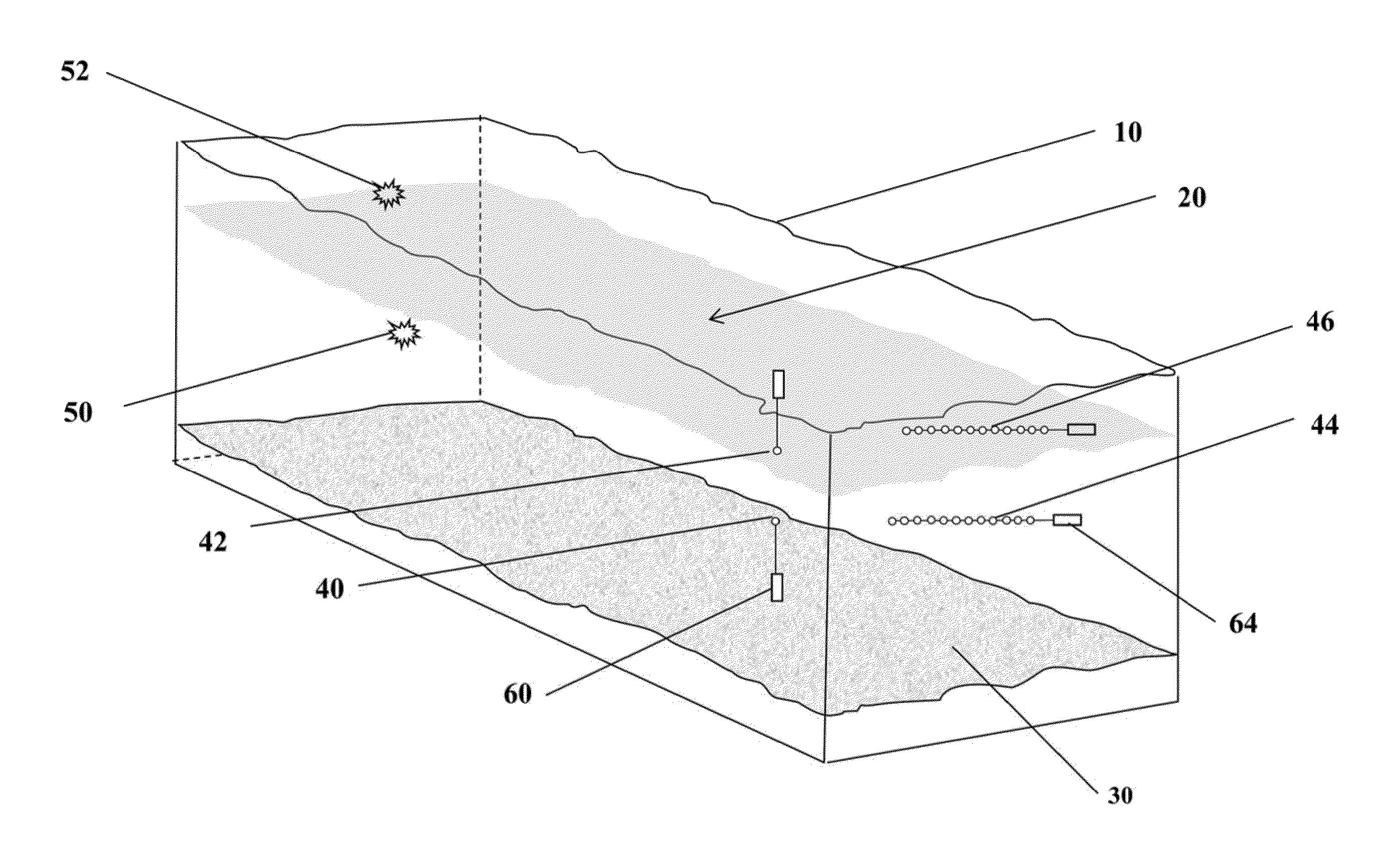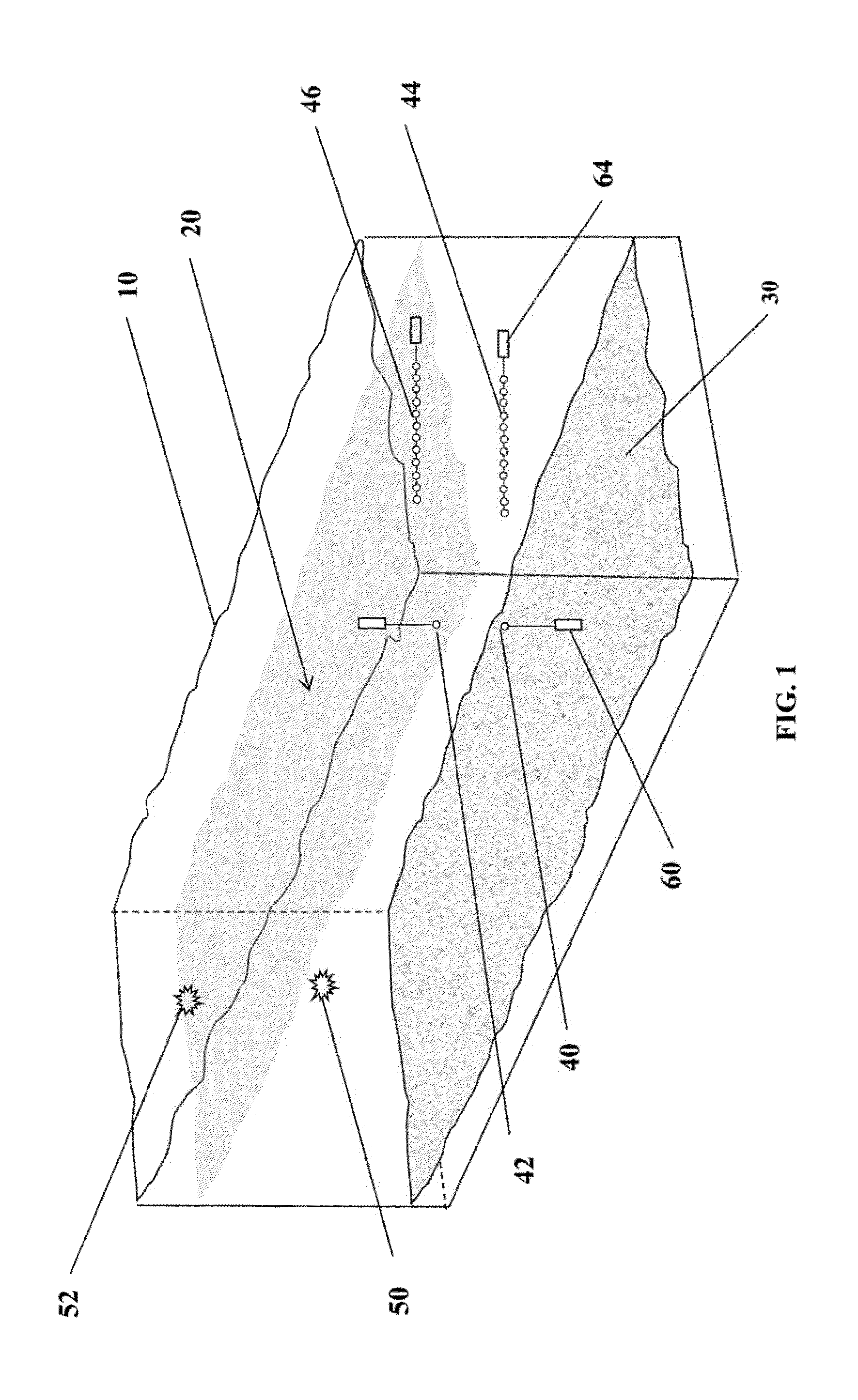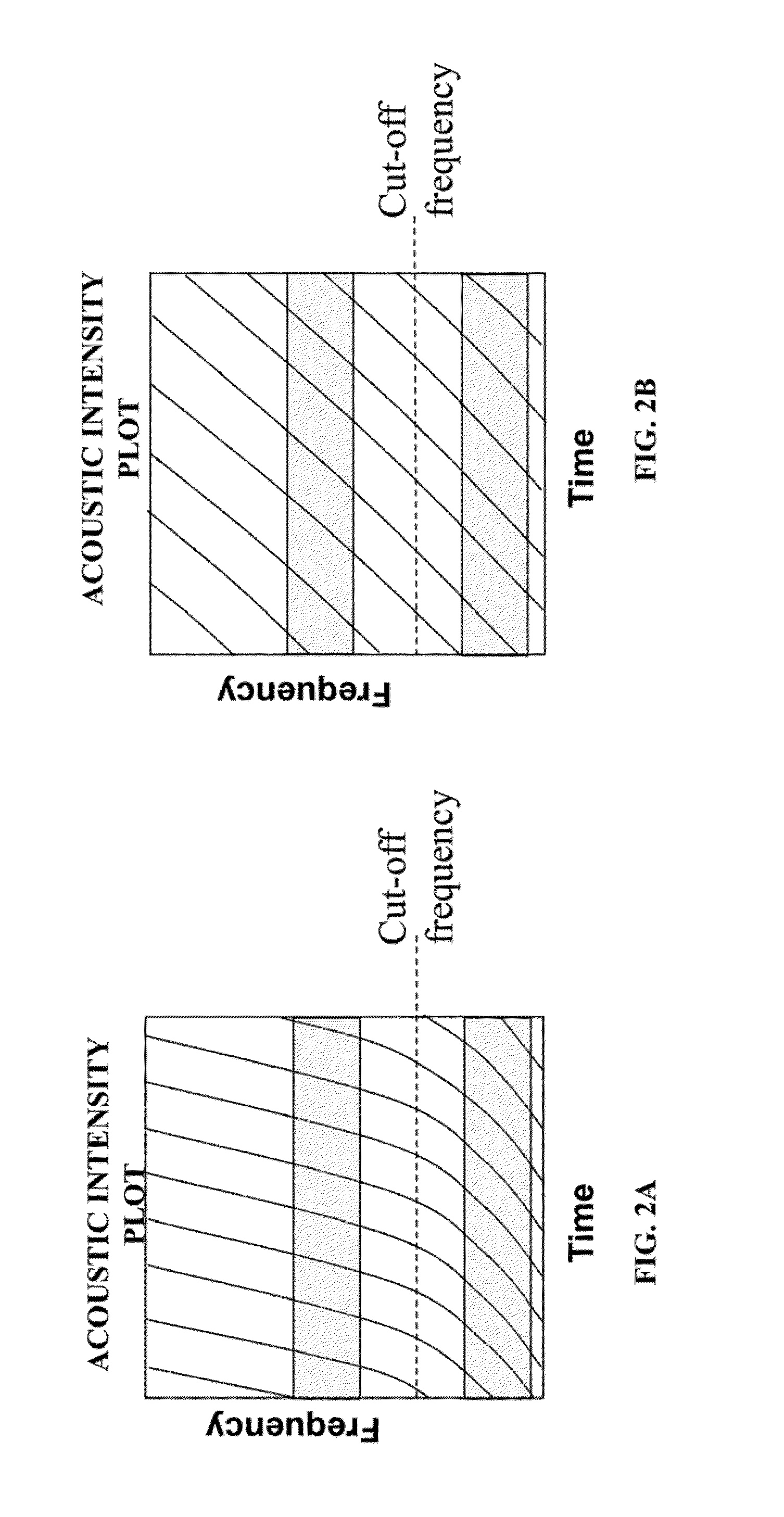Method of passive acoustic depth determination in shallow water
a shallow water and acoustic depth technology, applied in the field of shallow water acoustic depth discrimination, can solve problems such as the influence of prior art methods
- Summary
- Abstract
- Description
- Claims
- Application Information
AI Technical Summary
Benefits of technology
Problems solved by technology
Method used
Image
Examples
Embodiment Construction
[0018]An embodiment of the invention includes a method of acoustic depth determination in shallow water. FIG. 1 shows an illustrative column or block of a body of water such as an ocean. The block of a body of water includes a water surface 10, an ocean thermocline 20, and a seafloor 30. In this embodiment, at least one standard acoustic sensor 40, 44 located in a near-bottom layer below an ocean thermocline 20 is provided, such as shown by way of illustration in FIG. 1. For the purposes of this specification, “near-bottom” is defined as being on the seafloor 30, or above the seafloor but below the thermocline. The at least one acoustic sensor 40 operates at a first frequency regime and at a second frequency regime. The first frequency regime is above a cut-off frequency of the near-bottom layer. The second frequency regime is below the cut-off frequency of the near-bottom layer. Acoustic data from a moving broadband noise source of unknown depth is recorded at the at least one acou...
PUM
 Login to View More
Login to View More Abstract
Description
Claims
Application Information
 Login to View More
Login to View More - R&D
- Intellectual Property
- Life Sciences
- Materials
- Tech Scout
- Unparalleled Data Quality
- Higher Quality Content
- 60% Fewer Hallucinations
Browse by: Latest US Patents, China's latest patents, Technical Efficacy Thesaurus, Application Domain, Technology Topic, Popular Technical Reports.
© 2025 PatSnap. All rights reserved.Legal|Privacy policy|Modern Slavery Act Transparency Statement|Sitemap|About US| Contact US: help@patsnap.com



